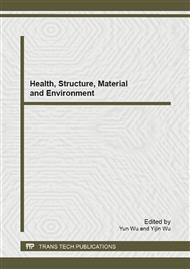p.911
p.922
p.926
p.930
p.936
p.941
p.946
p.953
p.958
An IFP Model for Carbon Footprint in Low-Carbon Urban Agglomeration under Uncertainty
Abstract:
This paper corrected the existing optimization model of low-carbon urban agglomeration using interval fuzzy programming (IFP) method and several constraint conditions are revised according to the 12th Five Year Plan of the urban agglomeration. The case study shows that the carbon footprint of per unit GDP of urban agglomeration was decreased by [21.95, 57.32] (%) and energy intensity was reduced by [25.89, 50.81] (%) compared with those in 2010; meanwhile, the carbon footprint of per unit GDP and energy intensity in the core area was reduced by [18.90, 34.67] (%) and [22.36, 22.76] (%) respectively, compared with those in 2010. The optimized scheme complies with the requirements of the 12th Five-Year Planning Outline of Controlling Greenhouse Gas Emission and the regional planning targets. The corrected model also provided more decision-making space for the sustainable development of low-carbon urban agglomeration.
Info:
Periodical:
Pages:
936-940
Citation:
Online since:
February 2013
Authors:
Price:
Сopyright:
© 2013 Trans Tech Publications Ltd. All Rights Reserved
Share:
Citation:


